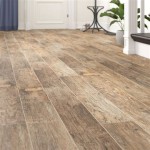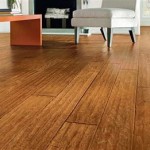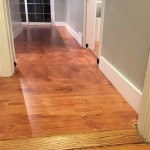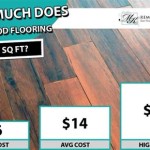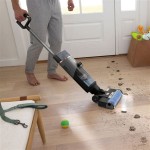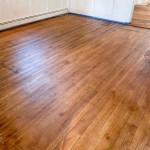Wood Filler for Prefinished Hardwood Floors: A Comprehensive Guide
Maintaining the aesthetic appeal and structural integrity of prefinished hardwood floors requires meticulous attention to detail, especially when addressing imperfections such as gaps, cracks, or small damages. Choosing the appropriate wood filler is crucial for achieving a seamless and durable repair that blends seamlessly with the existing finish. This article provides a comprehensive overview of wood filler options for prefinished hardwood floors, guiding readers through selection criteria, application techniques, and considerations for achieving professional-quality results.
Prefinished hardwood floors offer several advantages over unfinished floors, including factory-applied, durable finishes and reduced installation time. However, they are still susceptible to wear and tear, leading to the need for occasional repairs. The primary challenge when using wood filler on prefinished floors lies in matching the existing color and sheen of the finish. A mismatched filler can detract from the floor's appearance, making the repair more noticeable than the original imperfection. Therefore, careful selection and application are paramount for achieving a satisfactory outcome.
The selection of a wood filler for prefinished floors involves considering several factors, including the size and type of imperfection, the desired color match, the filler's workability, and its compatibility with the existing finish. Different types of wood fillers offer varying properties, making some more suitable for specific applications than others. Understanding these properties is essential for making an informed decision.
Key Considerations When Choosing Wood Filler
Several factors contribute to the success of a wood filler repair on prefinished hardwood floors. Selecting the right type of filler and applying it correctly are essential steps. Here are three key points to keep in mind.
Color Matching and Tinting
Achieving a perfect color match is arguably the most critical aspect of using wood filler on prefinished floors. The goal is to create a repair that is virtually indistinguishable from the surrounding wood. Pre-tinted wood fillers are available in a wide range of colors, but finding an exact match can still be challenging. In many cases, custom tinting is necessary to achieve the desired result. This can be done by mixing different shades of pre-tinted fillers or by adding pigments or stains to a neutral-colored filler base.
When tinting wood filler, it is crucial to work in small increments, carefully mixing the pigment or stain into the filler until the desired color is achieved. It is always best to err on the side of a slightly lighter shade, as it is easier to darken the filler than to lighten it. Before applying the tinted filler to the floor, it is recommended to test the color match in an inconspicuous area to ensure that it blends seamlessly with the existing finish. Allow the test area to dry completely before making a final assessment, as the color may change slightly during the drying process.
Another approach to color matching involves using wood dust collected during sanding the floor. This dust can be mixed with a clear epoxy or polyurethane binder to create a custom-colored filler that perfectly matches the surrounding wood. This method is particularly effective for larger repairs where a seamless color transition is essential. However, it requires careful preparation and application to ensure that the filler bonds properly to the substrate.
Types of Wood Fillers and Their Applications
A variety of wood fillers are available, each with its own unique properties and applications. Understanding the characteristics of each type is crucial for selecting the appropriate filler for a specific repair. Some of the most common types of wood fillers include:
Acrylic Latex Fillers: These are water-based fillers that are easy to apply and clean up. They are suitable for filling small gaps and cracks in prefinished floors. Acrylic latex fillers are paintable and stainable, allowing for further customization of the color match. However, they may shrink slightly as they dry, requiring multiple applications to achieve a flush surface. They are generally not recommended for larger repairs or areas subject to heavy traffic.
Epoxy Fillers: Epoxy fillers are two-part systems that consist of a resin and a hardener. When mixed together, they create a durable and waterproof filler that is suitable for filling larger gaps and cracks. Epoxy fillers offer excellent adhesion to wood and are resistant to shrinking and cracking. They can be tinted with pigments or stains to match the existing finish. However, epoxy fillers are more difficult to work with than acrylic latex fillers, requiring careful mixing and application to avoid air bubbles and uneven surfaces. Also, epoxy fillers generally dry harder than the surrounding wood and may not accept stain as readily.
Solvent-Based Fillers: These fillers offer excellent durability and water resistance. They are ideal for high-traffic areas and locations exposed to moisture. They are typically less prone to shrinkage compared to water-based fillers. The strong fumes and cleanup requirements with harsh chemicals are downsides to using solvent-based fillers.
Cellulose Fillers: These fillers consist of wood fibers and a binder. They offer good workability and can be sanded and stained. Cellulose fillers are suitable for filling small to medium-sized gaps and cracks. However, they may not be as durable as epoxy fillers or polyurethane fillers and may be more susceptible to moisture damage. They are generally not recommended for larger repairs or areas subject to heavy traffic.
Grain Fillers: While not strictly wood fillers, grain fillers are often used to fill the open pores of wood, creating a smoother surface for finishing. They are particularly useful for prefinished floors with a pronounced wood grain. Grain fillers are available in both water-based and solvent-based formulations and can be tinted to match the existing finish.
Preparation and Application Techniques
Proper preparation and application techniques are essential for achieving a successful wood filler repair on prefinished hardwood floors. Before applying the filler, the area to be repaired should be thoroughly cleaned and free of loose debris, dirt, and wax. Use a vacuum cleaner or brush to remove any particles from the gap or crack. If necessary, lightly sand the edges of the damaged area to create a smooth transition to the surrounding wood. Be careful not to damage the existing finish during the sanding process.
Apply the wood filler using a flexible putty knife or spatula. Press the filler firmly into the gap or crack, ensuring that it completely fills the void. Overfill the area slightly to allow for sanding. Remove any excess filler from the surrounding surface with a clean, damp cloth. Allow the filler to dry completely according to the manufacturer's instructions. Drying times may vary depending on the type of filler and the ambient temperature and humidity.
Once the filler is dry, sand it smooth with fine-grit sandpaper. Start with a coarser grit (e.g., 120-grit) to remove any excess filler and then switch to a finer grit (e.g., 220-grit) to blend the repair seamlessly with the surrounding surface. Be careful not to sand through the existing finish. If necessary, use a sanding block or a sanding sponge to maintain a consistent pressure and avoid creating uneven surfaces.
After sanding, clean the area with a tack cloth to remove any sanding dust. If the color match is not perfect, you can apply a touch-up stain or paint to the filled area. Use a small brush or a cotton swab to apply the stain or paint sparingly, blending it carefully with the surrounding finish. Allow the stain or paint to dry completely before applying a protective topcoat.
A suitable topcoat is essential to protect the repaired area and blend it seamlessly with the existing finish. Choose a topcoat that is compatible with the existing finish and has a similar sheen level. Apply the topcoat in thin, even coats, allowing each coat to dry completely before applying the next. Multiple coats may be necessary to achieve a uniform finish. Use a high-quality brush or a foam applicator to apply the topcoat, avoiding brush marks or streaks.
Addressing Specific Types of Imperfections
Different types of imperfections require different approaches to repair. Understanding the nature of the damage is crucial for selecting the appropriate filler and application technique.
Filling Small Gaps and Cracks
Small gaps and cracks are common in hardwood floors, particularly during seasonal changes in humidity. These imperfections can be easily filled with acrylic latex fillers or cellulose fillers. Clean the gap or crack thoroughly and apply the filler using a putty knife or spatula. Overfill the area slightly and remove any excess filler. Allow the filler to dry completely and sand it smooth with fine-grit sandpaper. Apply a touch-up stain or paint if necessary and finish with a protective topcoat.
Repairing Larger Gaps and Holes
Larger gaps and holes require a more durable filler, such as epoxy filler or polyurethane filler. Clean the damaged area thoroughly and remove any loose debris. If necessary, reinforce the edges of the hole with wood shims or supports. Mix the epoxy filler according to the manufacturer's instructions and apply it to the hole, filling it completely. Allow the filler to cure completely and sand it smooth with fine-grit sandpaper. Apply a touch-up stain or paint if necessary and finish with a protective topcoat.
Addressing Edge Damage and Splintering
Edge damage and splintering are common in high-traffic areas and near doorways. These imperfections can be repaired with wood filler, but it is important to address the underlying cause of the damage. Clean the damaged area thoroughly and remove any loose splinters. Apply a wood hardener to the damaged wood to strengthen it. Once the hardener has dried, apply wood filler to the area, filling any gaps or cracks. Allow the filler to dry completely and sand it smooth with fine-grit sandpaper. Apply a touch-up stain or paint if necessary and finish with a protective topcoat. Consider installing a threshold or edge protector to prevent future damage.
Maintaining Repaired Areas
Once the wood filler repair is complete, it is important to maintain the area properly to prevent further damage and ensure the longevity of the repair. Regular cleaning and maintenance are essential for protecting the finish and preserving the appearance of the floor.
Sweep or vacuum the floor regularly to remove dirt and debris. Use a damp mop with a mild cleaning solution to clean the floor as needed. Avoid using harsh chemicals or abrasive cleaners, as they can damage the finish. Use furniture pads under the legs of furniture to prevent scratches and dents. Avoid wearing shoes with high heels or cleats on the floor. Place area rugs in high-traffic areas to protect the finish from wear and tear. Regularly inspect the floor for any signs of damage and address any issues promptly to prevent them from worsening.
Wood filler can be an invaluable tool for extending the life and beauty of prefinished hardwood floors. With careful selection, application, and maintenance, wood filler repairs can seamlessly blend with the existing finish, restoring the floor to its original condition. It is always recommended to consult with a flooring professional for guidance on selecting the appropriate filler and application techniques for specific situations.

What Is The Best For Filling Gaps In Floorboards Mr Sander

Woodfiller For Hardwood Floors Advice

Can You Refurbish Pre Finished Hardwood Flooring Floor Refinishing

Wood Floor Filler Vs Putty What To Use When

Woodfiller For Hardwood Floors Advice

Woodfiller For Hardwood Floors Advice

Woodfiller For Hardwood Floors Advice

Home Remedies For Scuffed Engineered Wood Floors Scvfloorsmith

Hardwood Floor Filler Repair Top 5 Proven Techniques 2024

Can You Fill Gaps In Old Wood Floors 7 Amazing Solutions
